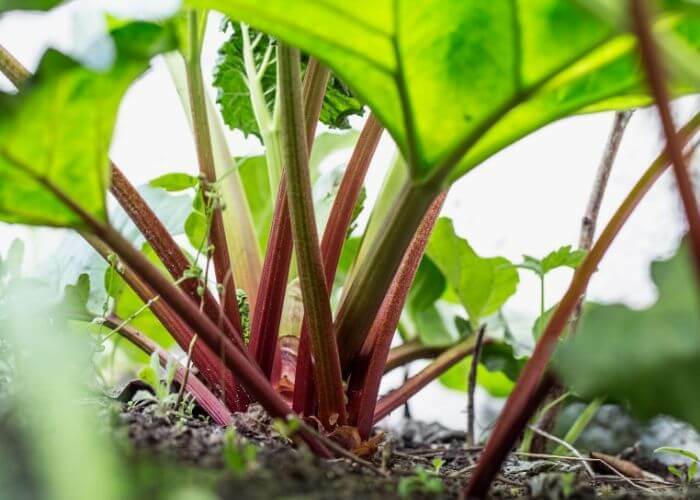Rhubarb Growing Guide

When you receive your roots:
Replant the rhubarb as soon as possible. The roots must not be allowed to dry out prior to planting. If the rhubarb can’t be planted immediately, place the clumps in a plastic bag and store them in a cool, dark location. This temporary storage should be fine for a few days.
Preparing the Soil:
Rhubarb is easy to grow. It performs best in full sun. Avoid shady sites near large trees or shrubs. Rhubarb also requires fertile, well-drained soils that are high in organic matter. Sandy and clay soils can be improved by incorporating large quantities of compost or other forms of organic matter into the soil before planting.
Planting:
When planting rhubarb, place each section upright in the planting hole with the buds 1 to 2 inches below the soil surface. Space the plants about 3 feet apart. After planting, water thoroughly. Continue to water the plants throughout the first growing season. During dry weather, a deep soaking every seven to 10 days should be adequate. Don’t harvest any stalks the first year; wait until the second or third year so the roots can establish themselves. Rhubarb can be harvested over a four-week period in the third year. In the fourth and succeeding years, stalks can be harvested for eight to 10 weeks.
Fertilizing, watering, and maintenance:
Flower formation may have been induced by stressful growing conditions, such as drought, extreme heat or infertile soils. Age also may be a factor. Old plants tend to flower more than younger ones. Flower formation can be discouraged by following good cultural practices. Sprinkle one-half cup of an all-purpose garden fertilizer, such as 10-10-10, around each plant in early spring. Stop harvesting rhubarb in mid-June. Water rhubarb plants once a week during prolonged dry periods. Dig and divide large, old rhubarb plants in early spring or late summer.
Dig deeply to insure getting a large portion of each plant’s root system. Large rhubarb plants can also be divided. Divide large clumps with a sharp spade or butcher knife. Each section (division) should have at least two or three buds and a portion of the root system.
Rhubarb also can be transplanted in early fall (mid-September to early October). Mulch fall planted rhubarb with several inches of straw in mid-November.
Harvesting:
On young plants, pick stalks only in the spring and allow them to grow unpicked all summer or growth will be delayed the following spring. You can harvest sparingly on vigorous, well-established plants throughout the summer. Any leaves remaining at the end of the season can be pulled just before the first fall frost.
